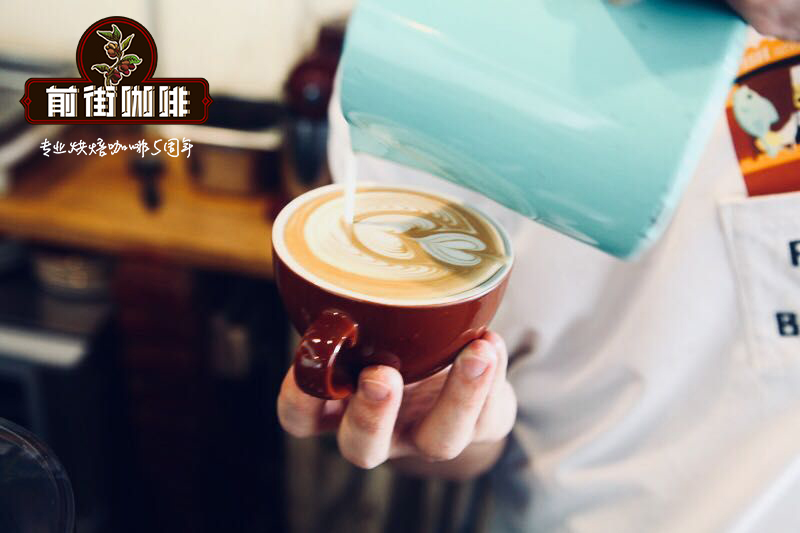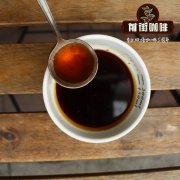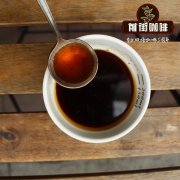Flavor characteristics of G1 washed beans in Cochel treatment Plant, Yega Feikochel Town, Ethiopia

Professional coffee knowledge exchange more coffee bean information please follow the coffee workshop (Wechat official account cafe_style)
What are the flavor characteristics and planting environment of G1 washed beans from the Cochel treatment Plant in Yega Feikochel Town, Ethiopia?
(Ethiopia Washed Yirgacheffe Kochere Kore G1)
Producing area: Yirgacheffe (Kochere) producing area
Producer: Cory (Kore) processing plant
Variety: native species (Heirloom)
Altitude: 1800 to 2000 m
Harvest time: October of each year to February of the following year
Treatment method: traditional washing treatment
Flavor features: floral aromas, bright citrus acidity, sweet and sour aromas of lemon, berries and honey,
Rich and bright acidity, deep, full, clean and balanced taste, long, lively and changeable fruit after rhyme.
Introduction:
There are eight major producing areas in Ethiopia: Ekempti, Limu, Illubabor, Djimma, Harrar, Teppi/Bebeka, Sidamo and Yirgacheffe. Yirgacheffe is located in the Gedeo region of southern Ethiopia, and the jurisdiction of this area is better known as Yegashafi and Kochere. As the coffee produced by Yirgacheffe has a unique flavor and is widely loved, it has its own style in product classification and has always occupied a place in the global boutique coffee market. Yirgacheffe, in the province of Sidama, is itself a small town, with three small producing areas of Wenago, Kochere and Gelena Abaya nearby. Because the flavor of coffee produced is almost the same as that of Yega Sheffield, Kochere is also classified as Yega Sheffield. Ethiopia implemented a new trading and grading system in November 2009. in addition to Yega Xuefei, three new by-product areas such as Wenago, Kochere and Genlena Abaya have been added, which shows that the flavor of these three areas is very meticulous and can be subdivided. Kochere is located in a small production area about 25 kilometers southeast of Yega Sheffield. The coffee beans are harvested from local small coffee farmers, which are composed of a large number of small coffee farmers with an average farming area of about 1 hectare and an altitude of about 1800-2000 meters. Coffee varieties are mainly a mixture of Typica and Heirloom (local native species). It is a rich coffee-producing area, and it is also one of the three famous and micro-producing areas of Yega Xuefei, with about 100,000 local residents, and coffee beans are the main source of income. Due to the relatively advanced raw bean water treatment equipment in this producing area, there has always been a high level of performance in the field of washing treatment. Coffee beans are praised for their clean sweetness with complex flavors of honey and citrus. In the main local production mode, small coffee farmers will harvest red fruits and send them directly to the washing treatment plant of the neighboring cooperative for unified treatment. Water washing technology has been introduced into Ethiopia since the 1970s. At present, water washing is the main treatment of raw beans in Kochere. After the coffee fruit with graded red cherry color is screened by the washing plant, the peel is washed and fermented directly, and the raw beans with shells are naturally exposed on the scaffolding after washing, and the humidity is 12% or less, which will be sent directly to the warehouse of the Ethiopian Commodity Exchange (ECX) in Awassa. Cup test grading and quantity are carried out, usually washed beans are stored in the form of shell beans, shelling work will not be carried out until the export. The well-known coffee review Coffee Review gave Kocher a high rating of 94 points for washed beans. Since the implementation of the ECX system in 2008, most of the raw coffee beans have been sold through competitive bidding. This batch of raw beans is from the Kore processing plant in Kochere. The treatment plant is located in the Yejashafi producing area, in Kore, a small village between Fishegenet and Chelelektu. It is a water treatment plant composed of about 700 families of small coffee farmers, and the raw beans are mainly harvested by nearby coffee farmers. Coffee fruit is a native species (Heirloom) planted at an altitude of about 1800-2000m. The highest grade of G1, rated by ECX, is excellent in appearance, consistency and freshness of raw beans to dry aroma and flavor. The aroma is rich in aroma, with the characteristics of Yega Chuefei, with elegant and charming flower-like fragrance, with bright sweet and sour aromas of citrus, lemon, berry and honey. Aromas of jasmine and lemon, bergamot, sweet honey, grapefruit tone, delicate acidity and bright taste. Jasmine, orange, grape, vanilla, honey and flower aromas, clean and balanced on the palate, with a long, lively and varied finish.
Important Notice :
前街咖啡 FrontStreet Coffee has moved to new addredd:
FrontStreet Coffee Address: 315,Donghua East Road,GuangZhou
Tel:020 38364473
- Prev

Introduction of Yellow bourbon Coffee from Hillado, Brazil. Brazilian coffee hand brewing parameters Brazilian coffee flavor
Professional coffee knowledge exchange more coffee bean information please follow the coffee workshop (Wechat official account cafe_style) as there are so many kinds of coffee in Brazil, you can't just use the word Brazilian coffee to include it. The vast majority of Brazilian coffee is unwashed and sun-dried and is classified according to the name of the state of origin and the port of transport. Brazil has 21 states and 17 states produce coffee, but its
- Next

Brazilian Santos Coffee introduction Brazilian Santos Coffee Flavor introduction Brazilian Coffee hand pulping parameters
Professional coffee knowledge exchange more coffee bean information please follow the coffee workshop (Wechat official account cafe_style) Brazil, is currently the world's largest coffee producer, accounting for about 1/3 of the world's total production. There are 26 states and 1 federal district in the country, and 17 states produce coffee, including Parana, Sao Paulo and Miraguillas.
Related
- Detailed explanation of Jadeite planting Land in Panamanian Jadeite Manor introduction to the grading system of Jadeite competitive bidding, Red bid, Green bid and Rose Summer
- Story of Coffee planting in Brenka region of Costa Rica Stonehenge Manor anaerobic heavy honey treatment of flavor mouth
- What's on the barrel of Blue Mountain Coffee beans?
- Can American coffee also pull flowers? How to use hot American style to pull out a good-looking pattern?
- Can you make a cold extract with coffee beans? What is the right proportion for cold-extracted coffee formula?
- Indonesian PWN Gold Mandrine Coffee Origin Features Flavor How to Chong? Mandolin coffee is American.
- A brief introduction to the flavor characteristics of Brazilian yellow bourbon coffee beans
- What is the effect of different water quality on the flavor of cold-extracted coffee? What kind of water is best for brewing coffee?
- Why do you think of Rose Summer whenever you mention Panamanian coffee?
- Introduction to the characteristics of authentic blue mountain coffee bean producing areas? What is the CIB Coffee Authority in Jamaica?

